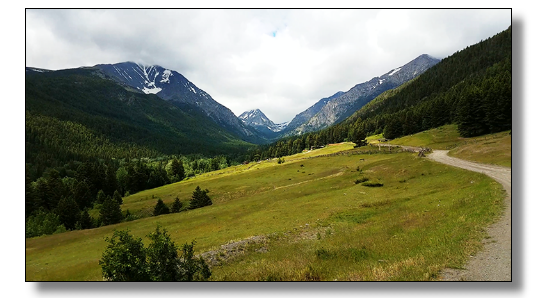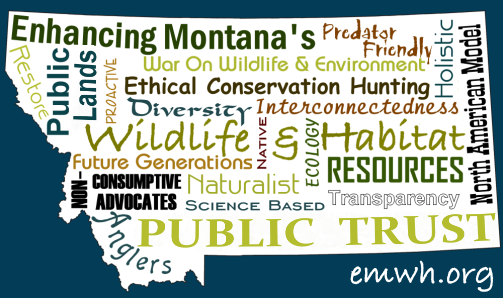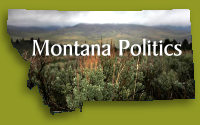
Bison Brucellosis Vaccination
The following citations highlight the facts that: 1. Bison vaccine is disputed, 2. Does not prevent brucellosis infection, only marginally protects from abortion, and is not longterm, 3. Single shot vaccine showed no difference with non-vaccinated, 4. Commitment to booster vaccinations and long term programs (30 years) would be necessary and would be at great cost and manpower hours with limited results, 5. Vaccinated bison would still contract field strains of Brucella abortus, requiring slughter and loss to program, 6. Vaccination during mid-gestation induces greater abortions, 7. Bison vaccination, in an attempt to lower seroprevalence, will have no effect on reducing seroprevalence in the elk population currently the transmission risk vector to the cattle, 8. Efficacy of RB51 vaccine has not been tested in field conditions, 9. Test and slaughter/vaccine programs are not efficient or socially acceptable management tools for wildlife.
"Many serologic tests have been produced to aid in diagnosis of B. abortus infections; however, all currently-used diagnostic methods were developed and validated for use only in cattle. When applied to wildlife, many cattle tests have shown to be inaccurate and unpredictable (pg. 13)" - A Risk Analysis of Brucella abortus Transmission Among Bison, Elk, and Cattle in the Northern Greater Yellowstone Area, 2010. "The efficacy of RB51 in bison remains in dispute. Olsen et al. (2003) reported that RB51 was efficacious as a calfhood vaccine, whereas data reported by Elzer and Davis (2002) were contradictory. However, there does appear to be consensus that EB51 vaccine is safe as a calfhood vaccine for bison. Also, informatin about effects on individual bison from vaccination during pregnancy is limited, and there are concerns about abortigenic responses in bison. (pg.20)... However, because bison rarely transmit B. abortus to elk, management alternatives such as vaccination that reduce bison seroprevalence are unlikely to reduce transmission from elk to cattle (pg. 81)... Bison vaccination did not meaningfully reduce B. abortus transmission risk to cattle (97)... Bison vaccination and the resultant lowering of bison seroprevalence also was not an effective risk reduction strategy...Delaying cattle grazing turn-on dates showed the largest absolute reduction in B. abortus transmission incidence between wildlife and cattle. Delay the earliest cattle turn-on date to 6/21 reduced transmission incidence to one case every 3.3 years and further delaying the turn-on date to 6/30 resulted in only one case every 30.4 years (pg.107)." - A Risk Analysis of Brucella abortus Transmission Among Bison, Elk, and Cattle in the Northern Greater Yellowstone Area, 2010. "Bison in single-vaccination treatment groups (hand RB51 and dart RB51) did not differ (P>0.05) from the control group in the incidence of abortion or recovery of S2308 from uterine, mammary, fetal, or maternal tissues at necropsy." - Efficacy of Dart or Booster Vaccination with Strain RB51 in Protecting Bison against Experimental Brucella abortus Challenge, pg. 886, 2012 "As implementation of a vaccination
program for free-ranging wildlife will be expensive and require
long-term commitment of human and financial resources for success,
the failure of the vaccination strategies evaluated in the current
study to provide sterile immunity may be of concern to some individuals.
However, one model for brucellosis estimated a 24 to 66% reduction
in seroprevalence in bison over a 30-year period, using an estimation
of vaccine efficacy of 0.5 and an estimation of vaccination coverage
of 1 to 29% of the population. As abortins are the most significant
mechanism for horizontal transmission of B. abortus in
ruminants, it should be noted that the current study found that
booster vaccination reduced abortions by 83%, uterine infection
by 60%, and colonization in uterine placentomes by 78% after experimental
challenge in comparison to results for control bison. Using a
similar comparison, a single hand vaccination with RB51 in our
study was associated with a 33% reduction in abortions, a 34%
reduction in uterine infection, and a 48% reduction in placentome
colonization after experimental challenge compared to those in
nonvaccinated animals. .. "There is a need to improve brucellosis vaccines for bison, as overall data from our labratory suggest that the RB51 vaccine is not as efficacious in protecting bison against experimental challenge when compared to similar data from vaccinated cattle. Any vaccination program for YNP bison will most likely be of long duration and require commitment of significant financial and human resources. Therefore, this study was initiated to characterize the safety, immunogenicity, and efficacy of a second dose of RB51 vaccine in bison and evaluate pneumatic darts as an option fo remote delivery of brucellosis vaccine (pg.642)...Responses of nonvaccinates and single vaccinates did not differ (P> 0.05) in any samplings obtained after the booster vaccination (60 to 84 weeks after the initial vaccination)... In conclusion, our study found relatively small differences in immunologic responses of bison after single RB51 vaccination delivered by parenteral or dart delivery or when comparing single and booster parenteral vaccinations (pg. 647)." - Immune Responses and Safety after Dart or Booster Vaccination of Bison with Brucella abortus Strain RB51, 2012. "Traditional test-and-slaughter programs have been effective for managing diseased livestock but these practices may not be realistic or socially acceptable for wildlife...The success of a vaccination program is influenced by vaccine efficacy and the proportion of the population innoculated. Our ability to deliver efficacious vaccines and monitor their effectiveness is restricted in free-ranging wildlife. Additionally, we will seldom have all the information necessary to predict the effectiveness of a wildlife vaccination program, but management actions will need to move forward despite these uncertainties (pg. F64)...The live B. abortus strain RB51 (SRB51) is the official brucellosis vaccine for cattle in the U.S., but has the potential to induce abortions in pregnant bison vaccinated in mid-gestation...There is uncertainty about the level of protection (i.e., efficacy) SRB51 will provide Yellowstone bison based on experimental studies...However, SRB51 was found to have little efficacy in adult and calf bison despite repeated vaccinations. Thus, the duration of protection provided by a single dose of SRB51 is unknown and older cows may need to be booster-vaccinated to extend the protection of the vaccine (pg. F66)... Vaccine-protected bison that were subsequently exposed to B. abortus were expected to react positively on serologic tests and, consequently, be removed during management operations (pg. F69)...Model simulations suggest that syringe vaccination of females captures at the park boundary will provide only a small decrease in brucellosis infection due to low vaccination rates that rely on out-of-the-park migrations...The current vaccine, SRB51, is not expected to provide lifetime protection and female bison may need booster vaccinations...Because the antibody responses to B. abortus are long lived, the proportion of actively infected bison would be exprected to decrease faster in response to vaccination than population seroprevalence. Also, vaccinated bison that are subsequently exposed to field strain Brucella will react positively on serologic tests even though they may be protected from further transmission. These bisaon would be removed during boundary operations, thereby impeding the reduction of brucellosis infection...Thus, a delay in seroprevalence decrease is expected in the first 10 years of initiating a vaccination program because of high population seroprevalence (pg.70), long-lived antibodies, and the removal of vaccinated, seropositive bison... Thus, a consistent long-term investment in vaccination will be required to meet the objective of he Interagency Bison Management Plan for reducing brucellosis transmission risk to cattle by reducing infection within Yellowstone bison... The efficacy of vaccine SRB51 has not been tested under field conditions and research is needed to estimate its efficacy within the Yellowstone system. Also, the duration of vaccine protection offered by SRB51 is unknown, but undoubtedly plays an important role in reducing infection and transmission... In addition, realistic group responses of bison to vaccination are largely unknown, and disturbances from remote vaccination may make bison difficult to vaccinate with this method over the long term. Remote vaccination effort will be (pg. F71) unable to compensate for vaccine efficacy if bison are difficult to vaccinat. (pg. F72)." - Vaccination strategies for managing brucellosis in Yellowstone bison, 2010. "The effectiveness of Strain RB51 vaccine against field strain B. abortus is not conclusive and mixed results have been reported by various research projects. The USDA–Agricultural Research Service has published results of research showing that only 15% of vaccinated bison aborted pregnancies when experimentally challenged by a virulent strain of B. abortus, while 62% of non-vaccinates aborted their pregnancies. Conversely, experiments conducted by Texas A&M University concluded that vaccination with Strain RB51 provides no protection from aborted pregnancies. The results are not comparable because methods were not consistent (pg. vi)." - Brucellosis Remote Vaccination Program for Bison in Yellowstone National Park DRAFT Environmental Impact Statement, 2010. |
Your Advertisement Here |
Site designed and maintained by Kathryn QannaYahu




